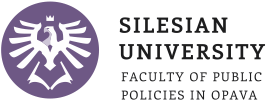Central European Papers 2014, 2(1):53-73 | DOI: 10.25142/cep.2014.005
The Development of Slovak-Hungarian Relations in 1939-1940 from a Soviet Aspect
- Magyar Tudományos Akadémia, Bölcsészettudományi Központ, Történettudományi Intézet, Research Centre for the Humanities, Hungarian Academy of Sciences, Budapest, Úri u. 53, 1014 Budapest, Hungary, janek.istvan@freemail.hu
After concluding the Molotov-Ribbentrop Pact, the Soviet Union unexpectedly became an ally of the Slovaks. Slovak political decision-makers evaluated this act as a "historic turnaround", which then enabled the realization of mutual solidarity between Germany and Russia. Soviet diplomats characterized Slovakia in their reports as a "gate facing the Balkans" and as an "eye" into the Western half of Europe. Slovak politicians saw in their relationship with the Soviet Union the possibility to seek a counterbalance against the German influence that was encumbering the country. Slovakia's foreign policy was hoping that the Soviet Union as a Slavic brother state would support Slovakia in the Hungarian-Slovak conflict. The rivalry between Hungary and Slovakia, when both states had been attempting to gain Hitler's favour since 1939, eventually led to their attempting to win points to military domain. Thus, both of the states became ensnared in the war against the Soviet Union, an effort which other satellite states also joined. According to Jozef Tiso, Slovakia needed to enter the war against the Soviet Union because it could thus gain a basis from which to regain her territories that had been annexed to Hungary. The relationship between both states was important from the point of view of the Soviet Union foreign policy because the Soviet Union was thus able to gain information about Germany, or as the case may be, it was able to restrain them from declaring war. In the fall of 1939 full diplomatic relations between Hungary and the Soviet Union were renewed, in which the German-Soviet rapprochement also played a role. Soviet diplomats attempted to keep their government informed in as much detail as possible about the Slovak-Hungarian relationships.
Keywords: History, Diplomacy, Slovak policy, Hungarian-Russian-Slovakian relations, 1939-1941
Published: March 1, 2014 Show citation
References
- Slovenský národný archív (SNA) (Slovak National Archives): f. Ministerstvo zahraničných věcí (MZV) - Politické zprávy (PZ), f. Národný Súd (NS).
- Magyar Nemzeti Levéltár Országos Levéltára (MNL-OL) (National Archives of the Hungarian State Archives): f. Miniszterelnökség (ME), K 28, f. Külügyminisztérium (KÜM), K 63.
- Slovák, 1939, Year 21, No. 227.
- Slovák, 1939, Year 21, No. 234.
 Go to original source...
Go to original source... - Slovák, 1940, Year 22, No. 107.
 Go to original source...
Go to original source... - Slovenská politika, 1939, Year 20, No. 64.
 Go to original source...
Go to original source... - Slovenská politika, 1939, Year 20, No. 65.
 Go to original source...
Go to original source... - Slovenská politika, 1939, Year 20, No. 66.
 Go to original source...
Go to original source... - ÁDÁM, Magda: Magyarország külpolitikája. Diplomáciai iratok Magyarország külpolitikája, vol. III, Budapest 1970.
- BENE©, Edvard: Paměti. Od Mnichova k nové válce a novému vítězství, vol. 1947, Praha 1947.
- ČIERNA-LANTAYOVÁ, Dagmar: Politické úvahy a súvislosti pri nadviazaní diplomatických stykov medzi Slovenskom a Sovietskym zväzom v roku 1939, in: Historické ątúdie, vol. 37, Bratislava 1996, 69-87.
- ČIERNA-LANTAYOVÁ, Dagmar: Pohµady na východ, Bratislava 2002.
- ČIERNA-LANTAYOVÁ, Dagmar: Poznámky sovietskeho zástupcu v Bratislave k prejavom napätia medzi Slovenskom a Maďarskom február 1940 - apríl 1941, in: Historické ątúdie, 43, 2004, 237-249.
 Go to original source...
Go to original source... - ČIERNA-LANTAYOVÁ, Dagmar: Problém vz»ahu s Maďarskom v aktivitách politikov a diplomatov Slovenského ©tátu 1939-45, in: Z dějín Visegrádského prostoru. Richardu Praľákovi k pětasedmdesátinám, GONEČ, Vladimír - VLČEK, Radomír (eds.), Brno 2006, 233-247.
- ĎURČANSKÝ, Ferdinand: Biela kniha, vol. II., Trenčín 1991.
- ĎURICA, Milan Stanislav: Dejiny Slovenska a Slovákov v chronologickom prehµade. Bratislava 1995.
- FRANK, Tibor (ed.): Roosevelt követe Budapesten. John F. Montgomery bizalmas politikai beszélgetései, 1934-1941, Budapest 2002.
- HILLGRUBER, Andreas (ed.): Staatsmänner und Diplomaten bei Hitler. Vertrauliche Aufzeichnungen über Unterredungen mit Vertretern des Auslandes 1939-1944, Frankfurt 1970.
- HOENTSCH, Jörg K.: Základné črty ríąskonemeckej politiky voči Slovensku pred Salzburgom (marec 1939 - júl 1940), in: Historik v čase a priestore. Laudatio Ąubomírovi Liptákovi, KAMENEC, Ivan - MANNOVÁ, Elena - KOWALSKÁ, Eva (eds.), Bratislava 2000, 225-252.
- KAMENEC, Ivan: Trauma, Solymár 1995.
- KOLONTÁRI, Attila: A Szovjetunió és az első bécsi döntés, in: Limes, 74, 2007, 2, 21-35.
- KOLONTÁRI, Attila: Magyar-szovjet diplomáciai, politikai kapcsolatok 1920-1941, Budapest 2009.
- LIPTÁK, Lubomír: Príprava a priebeh salzburských rokovaní roku 1940 medzi predstaviteµmi Nemecka a Slovenského ątátu, in: Historický časopis, 13, 1965, 3, 329-365.
- MARIJNOVÁ, Valentina Vladimirovna: Brána na Balkán. Slovensko v geopolitických plánech SSSR a Německa v letech 1939-41, in: Soudobé dějiny, 1, 1994, 6, 827-846.
- MIČIANIK, Pavel: Geopolitické postavenie Slovenska v rokoch 1939-1941, in: Politické vedy, 6, 2003, 2, 7-30.
- PASTOR, Peter: A moszkvai magyar követség jelentései 1935-1941, Budapest 1992.
- PEKNÍK, Miroslav (ed.): Dokumenty slovenskej národnej identity a ątátnosti, vol. II, Bratislava 1998.
- PETRUF, Pavol: Vz»ahy medzi Slovenskom a Francúzskom v rokoch 1939-1944, in: Historický časopis, 41, 1993, 5-6, 693-705.
- RÁNKI, György: Hitler hatvannyolc tárgyalása 1939-1944. Hitler Adolf tárgyalásai kelet-európai államférfiakkal, Budapest 1983.
- RÉTI, György: A Palazzo Chigi és Magyarország. Olasz diplomáciai dokumentumok Magyarországról a Darányi-kormány megalakulásától a szovjetunió elleni hadüzenetig, 1936-1941, Budapest 2007.
- RYCHLÍK, Ján: Genéza vz»ahu mocností k moľnosti samostatného Slovenska či obnovy Československa, in: Slovensko na konci druhej svetovej vojny. Stav, východiská a perspektívy. Zborník materiálov zo sympózia z Častej-Papierničky 23. 11. - 25. 11. 1993, BYSTRICKÝ, Valerián - FANO, ©tefan (eds.), Bratislava 1994, 114-124.
- SERES, Attila: Magyar revíziós törekvések és a Szovjet külpolitika, in: Levéltári Közlemények, 71, 2000, 1-2, 79-92.
- SERES, Attila: Orosz levéltári források a magyar-szovjet diplomáciai kapcsolatok történetéhez (1939), Lymbus 2005.
- ©MIHULA, Daniel: Vnútorný ľivot na vyslanectve Slovenskej republiky v Moskve v rokoch 1939-1941, in: Historický časopis, 46, 1998, 3, 479-496.
- TÁBORSKÝ, Edward: President Edvard Beneą between East and West, Stanford 1981.
- The Records of the Upper House of the Hungarian Parliament. Vol. I-II, Budapest 1940-1941, 283-284 (session 22, 30 April 1940).
- ZSELICKY, Béla: Kárpátalja a cseh és a szovjet politika érdekterében 1920-1945, Budapest 1998.
This is an open access article distributed under the terms of the Creative Commons Attribution 4.0 International License (CC BY 4.0), which permits use, distribution, and reproduction in any medium, provided the original publication is properly cited. No use, distribution or reproduction is permitted which does not comply with these terms.



